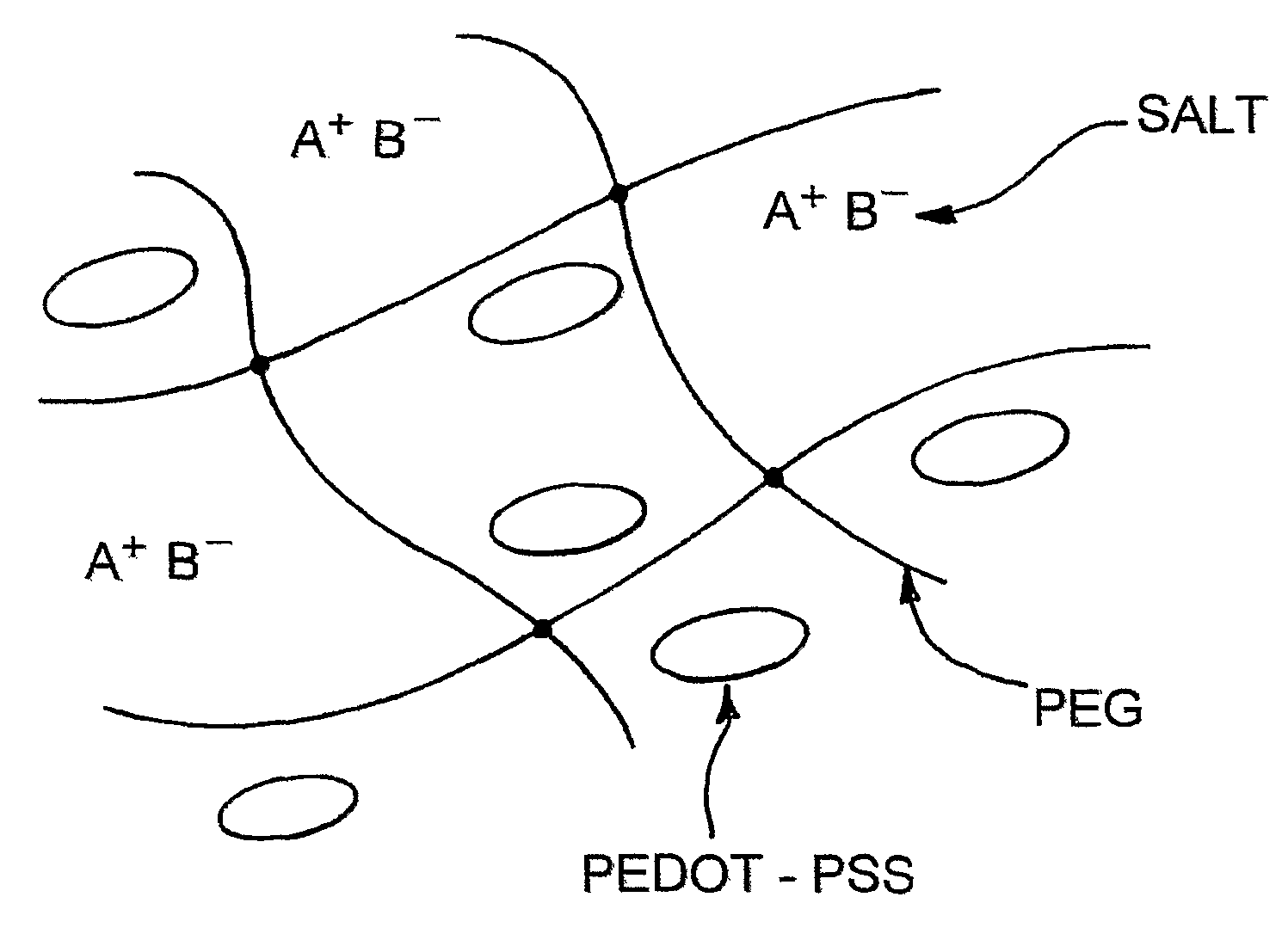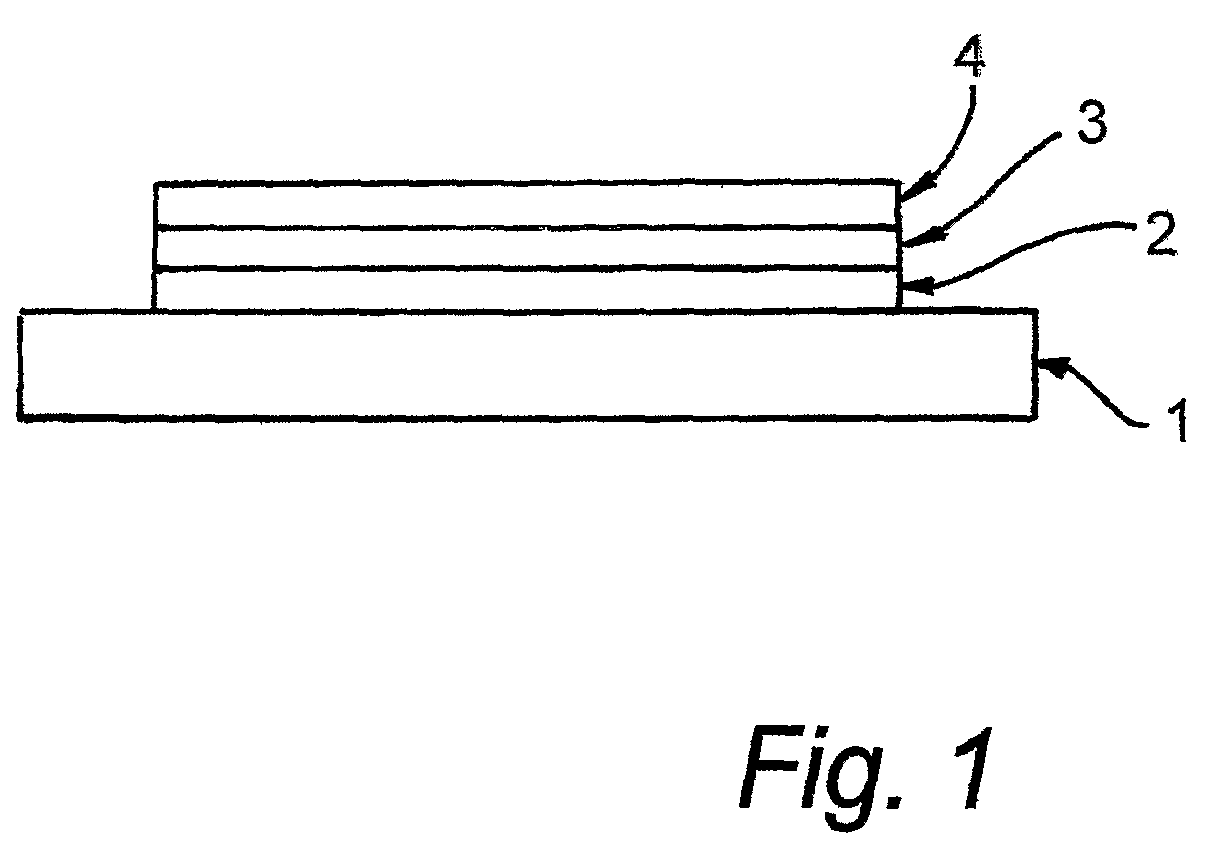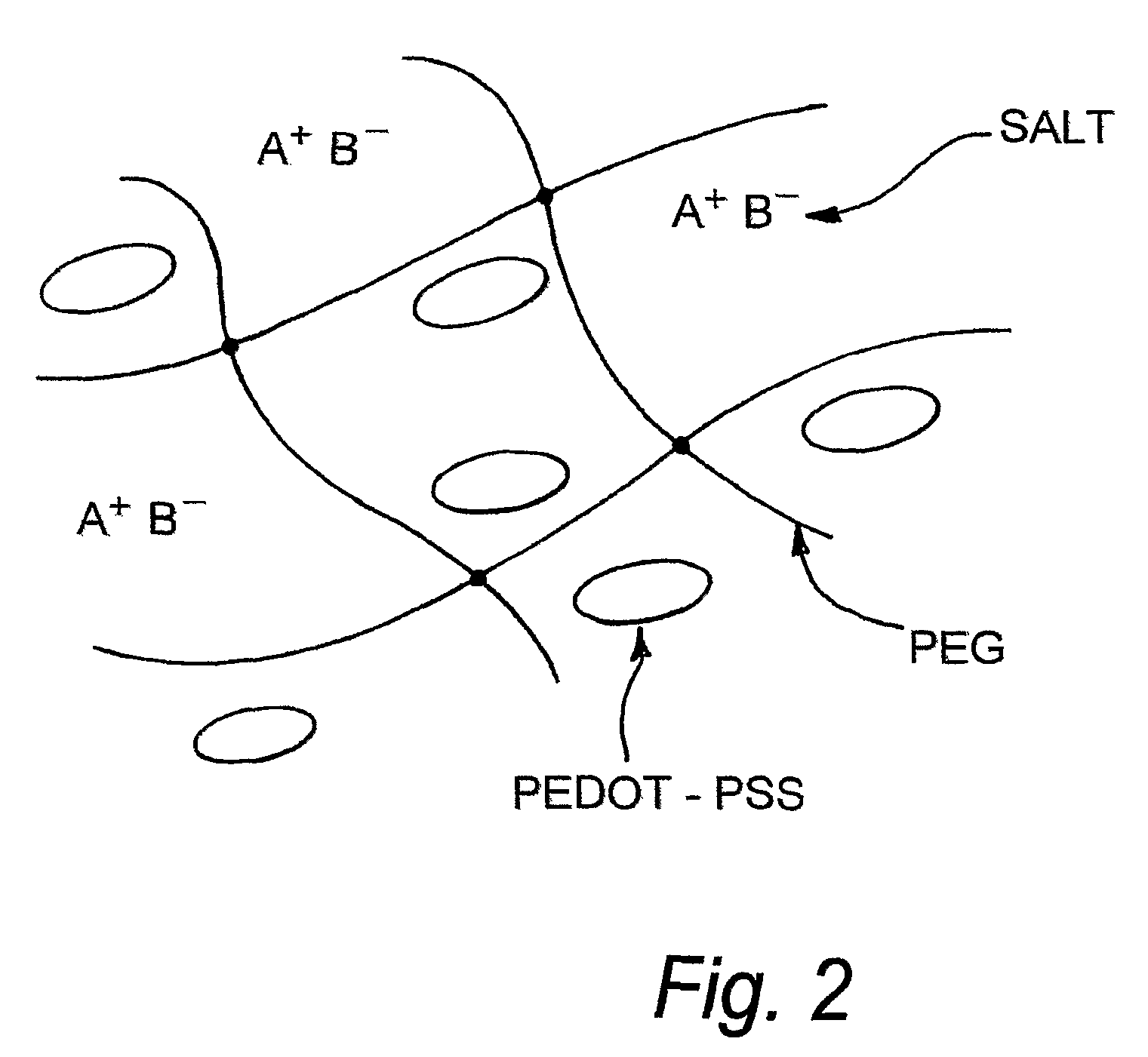Conductive polymer compositions in opto-electrical devices
a technology of opto-electrical devices and conductive polymer compositions, which is applied in the direction of conductive materials, organic conductors, non-conductive materials with dispersed conductive materials, etc., can solve the problems of lateral conduction and shorting between electrodes, poor performance, and many significant problems, and achieve the effect of more viscosity and thinness
- Summary
- Abstract
- Description
- Claims
- Application Information
AI Technical Summary
Benefits of technology
Problems solved by technology
Method used
Image
Examples
Embodiment Construction
[0086]The device shown in FIG. 1 comprises a transparent glass or plastic substrate 1, an anode 2 of indium tin oxide and a cathode 4. An electroluminescent layer 3 is provided between anode 2 and cathode 4.
[0087]Further layers may be located between anode 2 and cathode 3, such as charge transporting, charge injecting or charge blocking layers.
[0088]In accordance with an embodiment of the present invention, a conductive hole injection layer formed of a conductive polymer composition is located between the anode 2 and the electroluminescent layer 3 to assist hole injection from the anode into the layer or layers of semiconducting polymer.
[0089]The hole injection layer may be made by mixing PEDOT:PSS at a ratio of 1:2.5 with PEG and lithium triflimide in water. The resultant composition may be spin coated or ink jet printed to form a layer on the anode. The layer may then be heated to thermally cross-link the polyelectrolyte matrix after deposition. A schematic diagram illustrated the...
PUM
| Property | Measurement | Unit |
|---|---|---|
| work function | aaaaa | aaaaa |
| sheet resistance | aaaaa | aaaaa |
| ionisation potential | aaaaa | aaaaa |
Abstract
Description
Claims
Application Information
 Login to View More
Login to View More - R&D
- Intellectual Property
- Life Sciences
- Materials
- Tech Scout
- Unparalleled Data Quality
- Higher Quality Content
- 60% Fewer Hallucinations
Browse by: Latest US Patents, China's latest patents, Technical Efficacy Thesaurus, Application Domain, Technology Topic, Popular Technical Reports.
© 2025 PatSnap. All rights reserved.Legal|Privacy policy|Modern Slavery Act Transparency Statement|Sitemap|About US| Contact US: help@patsnap.com



